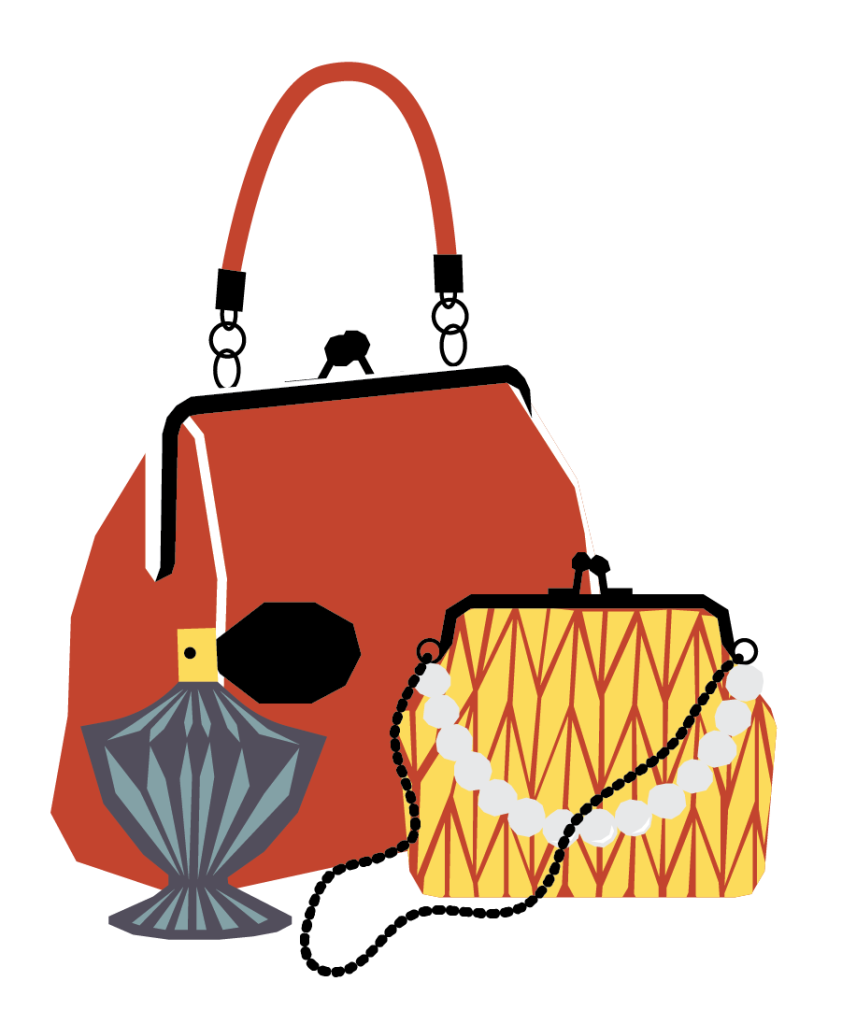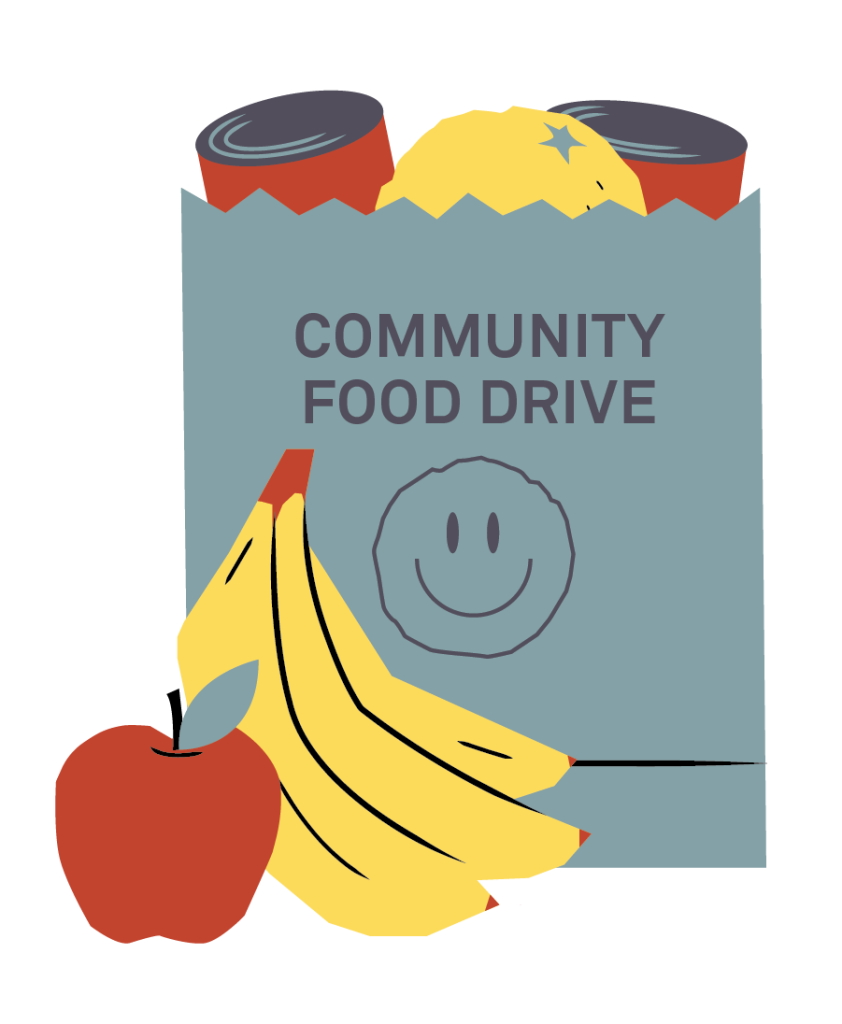How to Have It All
The pursuit of happiness can feel like a fruitless endeavor. UW experts say it doesn’t have to.
If you flipped to this page hoping to learn “How to Be Happy in Five Easy Steps,” I apologize for the confusion. This is not that kind of article.
Realistically speaking, the secret to happiness is likely located somewhere in the seemingly infinite amount of information that exists on the subject — knowledge humans have been accumulating for as long as we’ve been conscious. Making a meaningful contribution in a meager 2,300 words seems almost futile. Nevertheless, I figured that if I was going to try, I should at least conduct some original research. I planned to keep it simple: approach individuals at random and ask them, “Are you happy?”
I immediately knew I would not be conducting this experiment. There is no better way to quell someone’s happiness than by holding them accountable for it, and who am I to risk jeopardizing a perfect stranger’s happiness by calling it into question?
If this sounds overly cautious, I implore you to consider the latest findings in happiness from people who are qualified to conduct this research. According to the most recent General Social Survey, a study from the National Opinion Research Center (NORC) at the University of Chicago that has monitored Americans’ life satisfaction since 1972, we are the least happy we’ve been in 50 years. Only 19 percent of Americans reported being “very happy” in 2021, down from 32 percent in 2018; the previous record low was 28 percent in 2010. At the same time, the number of those who rated their life satisfaction as “not too happy” spiked from 13 percent in 2018 to 24 percent in 2021, breaking the previous record high of 17 percent in 1972.
It doesn’t take an advanced degree to speculate about why this might be, but it does take considerable expertise to identify a way of reversing the trend. Luckily, some of the foremost experts in human happiness make their scholarly home at the UW, and they have a few ideas. The present may be bleak, but the future is promising. Some of the very circumstances that have tanked our happiness in recent years may have positioned us to be the happiest we’ve ever been — if we choose to be.
A Brief History of Happiness
For the title of her 1958 novel, The Best of Everything, Rona Jaffe drew inspiration from a help-wanted ad in the New York Times that assured readers “you deserve the best of everything!” The book follows five young women’s fruitless quests for fulfillment, some to tragic ends. Jaffe’s semiautobiographical novel immediately resonated with millions of readers and continues to do so to this day as the pursuit of happiness — with its associated hardships and heartbreaks — remains a cornerstone of American culture.
13
Percentage by which the number of Americans who reported feeling “very happy” decreased since 2018 — the most drastic drop on record.
Happiness first appeared as a marketed commodity in America in the 1920s, when advertisers sought to kickstart a culture of consumerism. This was the beginning of the idea that one can buy happiness. According to Lawrence Samuel’s Happiness in America: A Cultural History, research of the time already identified wealth and consumption as nonviable routes to true happiness, but more than 100 years later, it’s a fundamental ideology we have yet to shake.
The 1950s saw the rise of the self-help publishing industry, and between 1975 and 2000, self-help titles doubled in the percentage of all American books in print. Seminal research from Christine Whelan, a scholar of the American self-help industry and the “happy professor” in the Department of Consumer Science in the UW School of Human Ecology, suggests that the infatuation with self-help resources was almost certainly a byproduct of Americans’ attempts at retaining a semblance of control in lives that felt otherwise out of hand.
Experts consider the time in which we’re living the most conducive to happiness in human history, at least in material terms. But despite milestones in societal advancement since the 1970s, our sense of control remains the same, as evidenced by our feeble attempts to actually be happy. One need look no further than the latest iteration of self-help: self-care, a $450 billion industry that profits from the notion that the secret to happiness is as accessible as skin-care serums and athleisure wear.
The ever-evolving pursuit of this transient high is the lifeblood of an industry that thrives on insatiable need, or what psychologists call the arrival fallacy: the belief that true happiness lies just beyond our current state of being.
“The more control we have acquired over our environments, the more we’ve lost sight of the fact that we cannot control everything,” says Pelin Kesebir, an honorary fellow in the UW’s Center for Healthy Minds and an expert on happiness. “Instead of looking at how much better we have made life, we wonder why life is not perfect.”
While material luxuries may provide fleeting bursts of pleasure, they fail to deliver on the everlasting bliss they promise.
“I imagine that it’s actually undermining people’s happiness, because every time you buy something that you think is going to be ‘the thing,’ and it doesn’t work, it’s another punch in the gut, [another instance in which] I’ve ‘failed’ in some way,” Whelan says. “Not only is this blaming the victim, but this is a pretty scary twist on the idea of the true pathways to happiness and well-being.”
This is not to say that money can’t buy happiness; Whelan teaches a course, Consuming Happiness, that instructs students on how to spend their money in a way that maximizes their well-being. Rather, the devout belief that happiness derives primarily from material sources is a symptom of a more pervasive obstacle in our pursuit of it.
Legendary Lows
Individualism — the social theory that prioritizes the individual over the collective — isn’t new, and it’s not uniquely American, but it is this hallmark of our society that rendered us susceptible to a 50-year happiness low. Understanding how individualism hinders our pursuit of enduring happiness presents the challenge of defining that elusive prize, and there are about as many definitions of happiness as there are people in search of it.
Scientists like Whelan and Kesebir define happiness as a subjective state of being. Kesebir and the late University of Illinois professor Ed Diener write that enduring happiness is a function of life satisfaction (“global judgments of one’s life”); satisfaction with one’s work, health, marriage, and other personal domains; and a healthy balance of pleasant and unpleasant emotions and moods, also known as positive and negative affect. In the context of American society, it’s fitting that the fundamental determinants of our happiness are primarily concerned with the individual. It’s also to our detriment.
Studies like the General Social Survey and Gallup polls have tracked trends in these realms for years, but comparing data from identical studies conducted before and after March 2020 can feel like comparing apples to alien spacecraft. And without the critical distance from a pandemic that hasn’t really ended, we can’t yet determine its long-term implications for our happiness. In the present moment, however, both the NORC data and the latest Gallup poll on the “Mood of the Nation” indicate that the most influential factors in our happiness were also among the pandemic’s many victims.
After steadily increasing since 2014, rates of Americans who reported being “very happy” in their marriages fell from 64 to 61 percent, while those reporting being “not too happy” in their marriages reversed improvement seen in 2018. Those satisfied with their financial situations fell 6 percent, while those unsatisfied rose by the same amount, and satisfaction with the quality of American health care has steadily declined since 2020. In January of that year, 43 percent of Gallup poll respondents were satisfied with “our system of government and how well it works,” and 57 percent were dissatisfied; in January 2022, those numbers were 27 percent and 73 percent, respectively. Finally, those who believe that the standard of living will improve fell from 65 to 47 percent, while those who lack faith in the potential for improvement rose from 15 to 25 percent.
“There are certain things that are out of our control, and the pandemic was a major illustration of that,” Kesebir says. “If we make our happiness conditional on dynamics over which we have very little control, we set ourselves up for failure from the outset.”
25
Percentage by which the global average of benevolent acts like making charitable donations and volunteering increased in 2021.
American individualism also conflicts with our otherwise inherently human affinity for connection. Whelan codesigned a course at the UW — Eco You: Belonging, Purpose, and the Ecology of Human Happiness — that highlights differences between ego (self-centered) and eco (community-centric) approaches to life and notes the latter’s tendency to yield enduring happiness.
“One of the core concepts of human ecology is that we are interdependent,” Whelan says. “The key predictor of happiness is not money. It’s not success or fame. It’s the quality of the relationships that people have.”
It’s no surprise, then, that happiness suffered so greatly not only from the physical isolation of the pandemic, but also from the way in which it exacerbated polarization. America’s population had been turning more drastically against itself for more than two decades, and now polarization is reaching an all-time high. The disparities between different groups’ responses to the pandemic, paired with those to the social justice movements and the heated election cycle of 2020, provided not only a direction in which to point fingers, but also another reason to reach inward rather than out to one another in search of happiness.
“If we don’t have a sense of interdependence or relationship with each other, we focus more on ourselves because that’s the only thing that we know and trust,” Whelan says. “When we as individuals don’t feel like there is a ‘we’ that’s all in this together, we turn inward more. It’s our happiness to fix. Then, if you are the enemy of my happiness, I’ve got to protect my happiness from you, and everything that you do is a threat to me.”
For Whelan, this idea transcends politics.
“Interdependence really just means that no man is an island,” she says. “We are in relationship with each other. We need to be kind and supportive of each other. My happiness and your happiness can actually be intertwined, and to ignore that actually will make me less happy.”
In short, the pandemic did us no favors in driving up rates of consumerism, debasing the fundamental determinants of our well-being, and deepening our ideological divides — but we also can’t say it didn’t give us anything.
Hope for Happiness
I mentioned that this article would not reveal “How to Be Happy in Five Easy Steps.” But Whelan and Kesebir do offer research-based advice for improving personal well-being.
According to Whelan, what we seek in self-help books and self-care purchases, we find in our own lives once we take the time to mindfully imbue them with purpose. Through her “daily purpose statement” exercise, she encourages individuals to reflect on not only the inherent merit in the minutiae of their days, but also the personal values and gifts they can share through meaningful gestures in service of others.
“While it’s easy for us to say meaning and purpose are these big ideas that don’t impact our daily lives, there are ways that we can integrate big-picture purpose and everyday tasks. Without actually changing a lot about what we’re doing, seeing the meaning in everyday things tends to make us feel a lot happier,” she says.
Kesebir takes a similar back-to-basics approach to nurturing the roots of enduring happiness through scholarly research on the cultivation of a healthy mind. She says it’s a function of attention and interpretation: the stimuli we allow into our reality and the ways in which we make meaning of those things. Evolutionary tendencies have hard-wired humans to be more attuned to negative (i.e., threatening or anxiety-inducing) stimuli. Through mindfulness, gratitude, practiced positivity, and the cultivation of healthy relationships, individuals can reclaim control of their perception of and response to their circumstances, even when they can’t control the circumstances themselves.
“The fact that happiness lies more in altruistic actions than in selfishness is one of the most important things that we need to learn as humankind.”
If these approaches sound clichéd, perhaps that’s okay; even the experts attest to the validity of truisms stamped on Hallmark cards and coffee mugs. In fact, Whelan keeps one — a quote from a former mentor — neatly framed in her office: “When self-help doesn’t work, try social change.”
“At the core of that is, when thinking about me, me, me isn’t working for you, realize that you are probably not the only one with this problem,” she says. “Think about the we and how can you solve the problem not just for you as an individual, but for other people like you.”
Ironically, the catalysts of our unhappiness over the past three years have also created ample opportunities to think of others. According to the 2022 World Happiness Report published by the United Nations’ Sustainable Development Solutions Network, one of the most remarkable behavioral results of the pandemic was a drastic uptick in benevolence. Every global region saw “large increases in the proportion of people who give money to charity, help strangers, and do voluntary work,” and the global average of these three measures was up by 25 percent in 2021 from pre-pandemic.
“The fact that happiness lies more in altruistic actions than in selfishness is one of the most important things that we need to learn as humankind,” Kesebir says. “My hope is that it will be something that people really pick up on in the context of learning about happiness and try to implement in their lives.”
In short, happiness doesn’t have to be a matter of “five easy steps.” There may simply be one, and we stand to benefit far more than just ourselves — and for longer than one fleeting moment — should we choose to take it. •
Megan Provost '20 is a staff writer for On Wisconsin who finds enduring happiness in writing articles for you fine readers.
Published in the Spring 2023 issue





Comments
No comments posted yet.